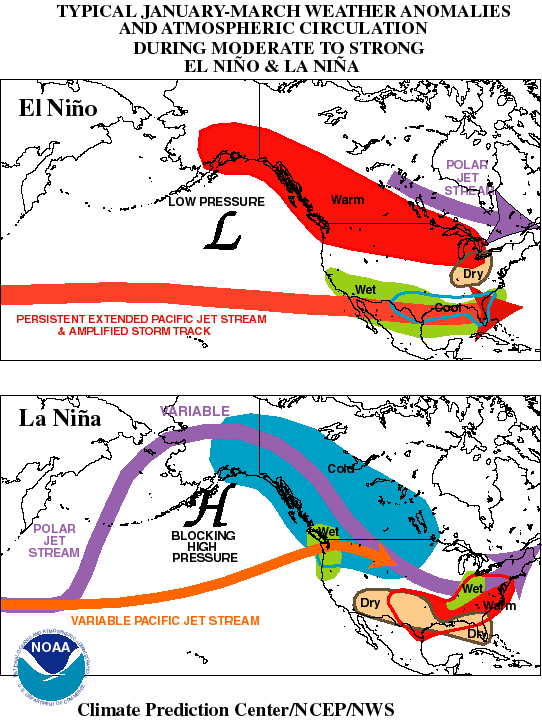selkirks
Active member
Several interesting developments in the past few weeks.
NOAA has issued a La Nina Watch. This is a critical first step. Once NOAA is on-board, you know that this thing is real and more developed. We've known for awhile that this is a budding La Nina, but NOAA is always slow on the uptake. That said, we now have the credibility of the United States' weather services on our side.
Climate Prediction Center is forecasting a cool and wet winter for the PNW. Yes, it's early. But it's not that early, and often the early predictions from NOAA tend to be the closest to fact. Here's an overview and the link.
For the Pacific Northwest:The entire winter period (OND, NDJ, DJF, JFM) looks cooler and wetter than normal. This is typical for La Nina. Who's ready for a great year at Whistler, Baker, Crystal, Bachelor, and Schweitzer?
For the Rest of the Country:The East Coast looks to have equal chances of cooler or warmer than normal temperatures and equal chances of drier or wetter in terms or precipitation. Looks like we'll have to wait and see. Colorado? Follow the link and take a look for yourself. California? Same.
THE LINK: http://www.cpc.noaa.gov/products/predictions/long_range/seasonal.php?lead=5(click on each of the 90-day outlooks)
The cool and wet weather in the PNW lately has excellent implications for the coming winter. Because the West is essentially in a trough of Low Pressure (cool and wet), the northern Pacific is in a ridge of High Pressure. That's good. The calmer and warmer the northern Pacific gets, the more negative the Pacific Decadal Oscillation goes. The stronger the negative PDO, the better the winter (when combined with La Nina) in the PNW. With the PDO already negative and steadily dropping, the current wet and cool weather will likely continue. Deal with it. It means an even more epic season next year.
THE POINT? Pacific Northwest might be the place to be next winter.
More soon.
NOAA has issued a La Nina Watch. This is a critical first step. Once NOAA is on-board, you know that this thing is real and more developed. We've known for awhile that this is a budding La Nina, but NOAA is always slow on the uptake. That said, we now have the credibility of the United States' weather services on our side.
Climate Prediction Center is forecasting a cool and wet winter for the PNW. Yes, it's early. But it's not that early, and often the early predictions from NOAA tend to be the closest to fact. Here's an overview and the link.
For the Pacific Northwest:The entire winter period (OND, NDJ, DJF, JFM) looks cooler and wetter than normal. This is typical for La Nina. Who's ready for a great year at Whistler, Baker, Crystal, Bachelor, and Schweitzer?
For the Rest of the Country:The East Coast looks to have equal chances of cooler or warmer than normal temperatures and equal chances of drier or wetter in terms or precipitation. Looks like we'll have to wait and see. Colorado? Follow the link and take a look for yourself. California? Same.
THE LINK: http://www.cpc.noaa.gov/products/predictions/long_range/seasonal.php?lead=5(click on each of the 90-day outlooks)
The cool and wet weather in the PNW lately has excellent implications for the coming winter. Because the West is essentially in a trough of Low Pressure (cool and wet), the northern Pacific is in a ridge of High Pressure. That's good. The calmer and warmer the northern Pacific gets, the more negative the Pacific Decadal Oscillation goes. The stronger the negative PDO, the better the winter (when combined with La Nina) in the PNW. With the PDO already negative and steadily dropping, the current wet and cool weather will likely continue. Deal with it. It means an even more epic season next year.
THE POINT? Pacific Northwest might be the place to be next winter.
More soon.

